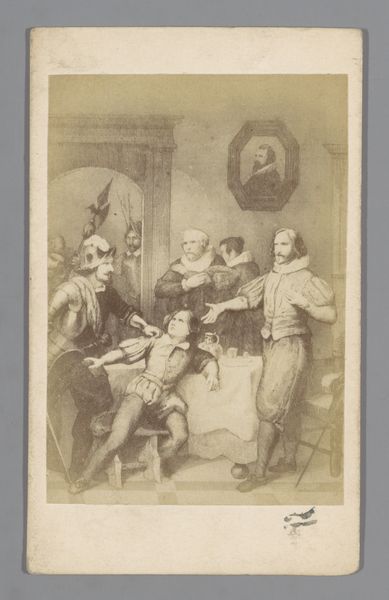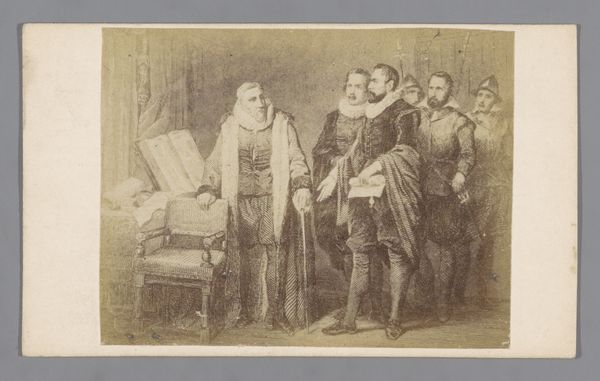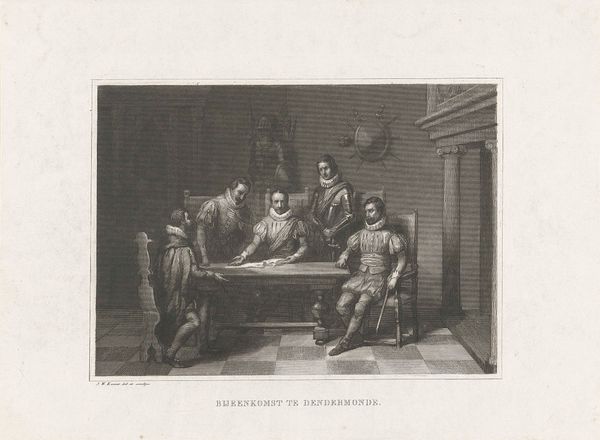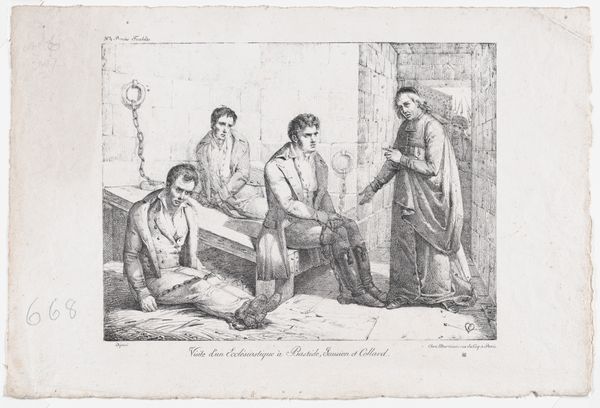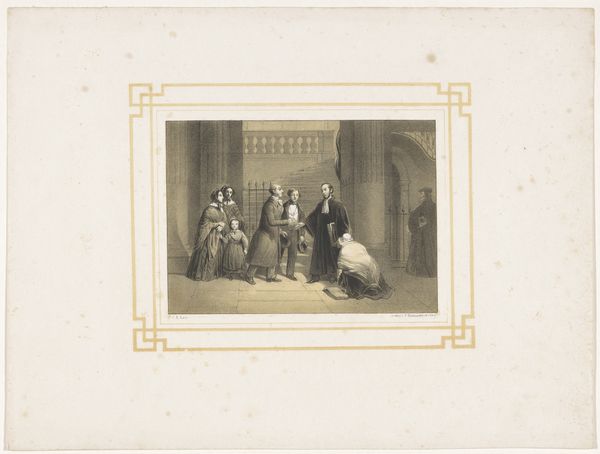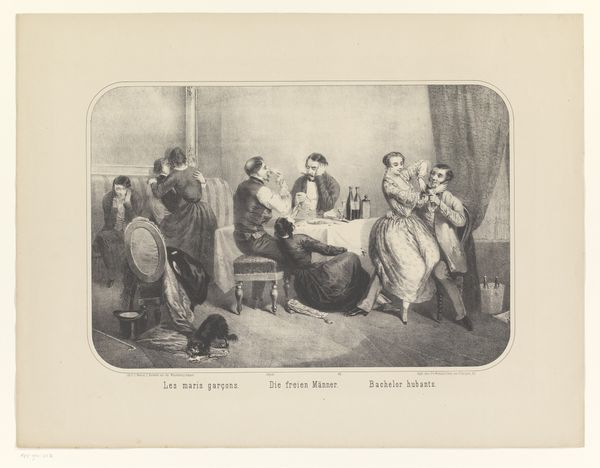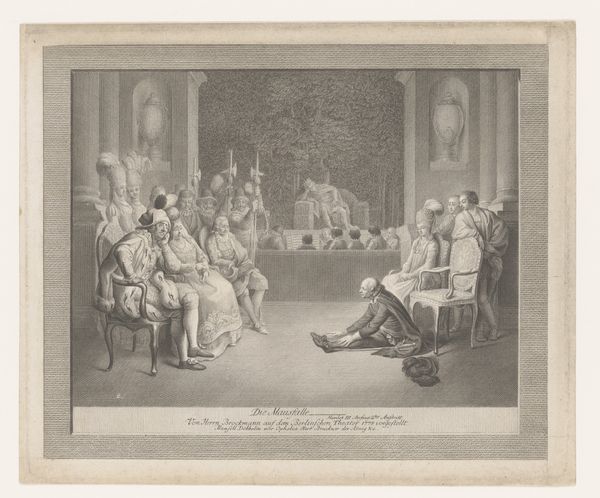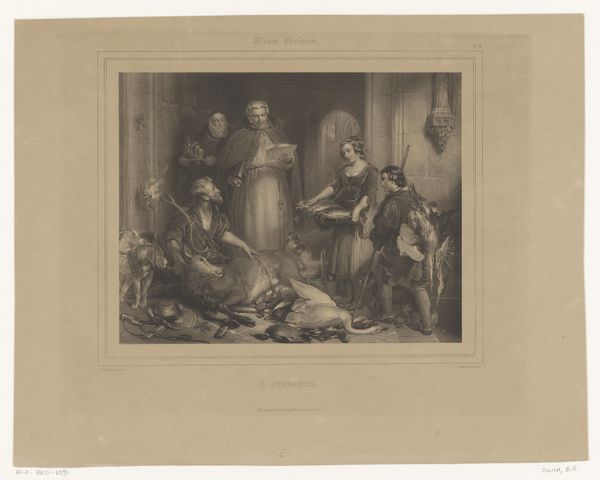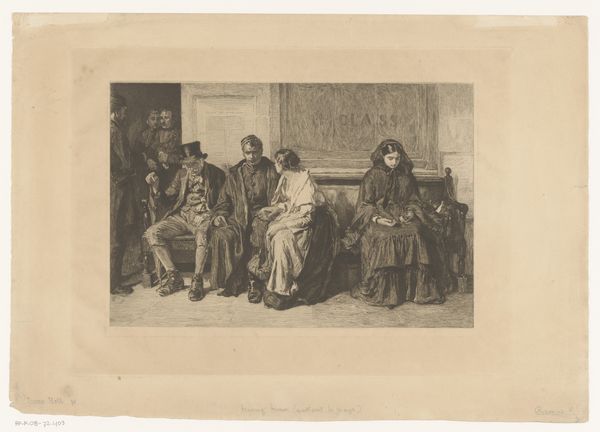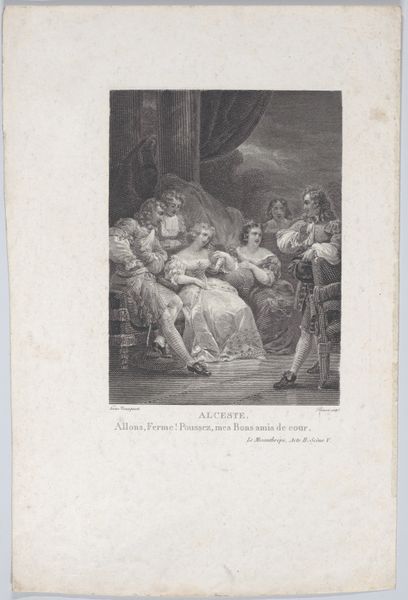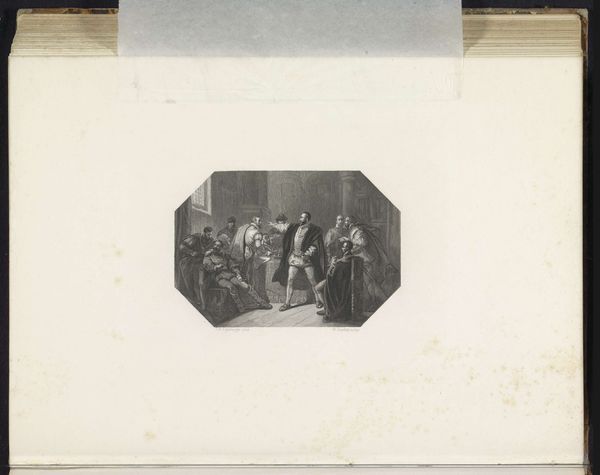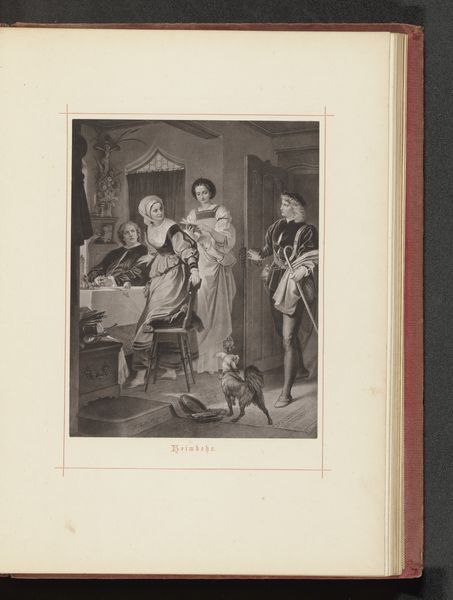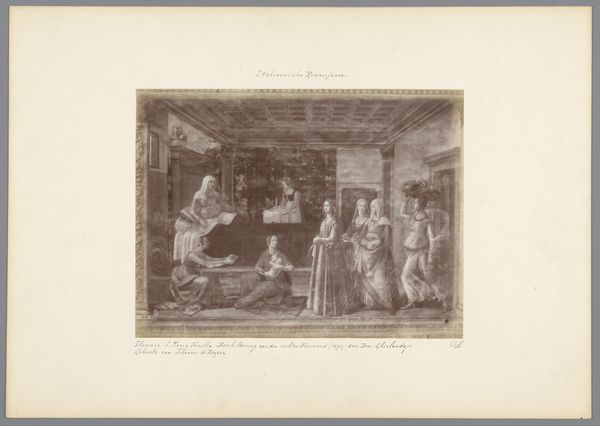
Fotoreproductie van een gravure van de bijeenkomst van Oranje, Horne, Egmond, Hoogstraten en Lodewijk van Nassau in Dendermonde op 3 oktober 1566 1850 - 1900
0:00
0:00
anonymous
Rijksmuseum
print, engraving
#
portrait
# print
#
genre-painting
#
history-painting
#
engraving
#
realism
Dimensions: height 56 mm, width 84 mm, height 62 mm, width 105 mm
Copyright: Rijks Museum: Open Domain
Curator: Immediately I'm struck by this sense of clandestine gathering. It’s sepia tones, this feels so loaded. Almost heavy, wouldn't you say? Editor: What we are looking at here is a photo reproduction of an engraving which depicts a gathering that took place in Dendermonde on October 3, 1566. The original engraving and, by extension this print, shows Oranje, Horne, Egmond, Hoogstraten, and Lodewijk van Nassau. Curator: A meeting of serious consequence I can only imagine! What do you make of it being realized as a print in the 19th century? Nearly three hundred years later! A curious echo, right? A renewed interest in their story or...perhaps something more practical about its production? Editor: Good question. I mean, we should definitely note the industrial context. By the time this photomechanical reproduction was made, there was a boom of such works circulating among an expanding bourgeois readership. Consider how printmaking democratizes the distribution of imagery, taking this from the realm of unique artwork and offering a consumable artifact available for all to have. Curator: Consumable artifact... yes. And yet look at the men themselves! Stiff but elegant. This huddle of power. But that armor looming behind! You just know the mood was far from convivial, even then! Editor: Indeed! The men are gathered around a table, possibly planning their resistance against Spanish rule. As a print, the labor involved in its production, its matrixes and ink and the implied social relations are far different than whatever that original political project entailed. But both projects reflect power, control, and something to gain. Curator: Gaining control...always at the heart of it. It is fascinating how this reproductive method sort of amplifies a specific political narrative, making accessible to ordinary people this vision of Dutch history. It gives it a material reality, if that makes sense. Editor: Exactly! The artwork offers a chance to re-examine not only its ostensible subject, but also the economic and historical conditions of artmaking itself. To look at how cultural narratives are literally and figuratively produced. Curator: So we started seeing it as heavy, and now it also became heavy laden in layers of history and context! It is like one object became a window, isn't it? Editor: Precisely! This artwork challenges our understanding of artistic creation and reminds us how even historical imagery can reveal production.
Comments
No comments
Be the first to comment and join the conversation on the ultimate creative platform.
